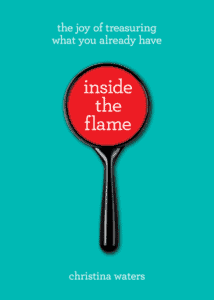
by Christina Waters | Feb 27, 2017 | Home |
A girlfriend who lives on the East Coast emailed, completely excited about her upcoming cruise vacation. “I’m taking your book with me,” she revealed. “It will be the perfect companion for this trip.” Of course I was pleased and honored that she thought of my book, Inside the Flame, to take on her journey. But come to think of it, yes, that is a great idea.
One of the strengths of this little book, is also one of its marketing challenges. The chapters range widely through many adventures, many intricately-described sensory events of being human in a world accessed through sight, sound, taste, touch, mood. Because the book doesn’t follow a single thread, but offers details and anecdotes about many kinds of experience, it’s hard to categorize. But the fact that it offers a wide menu of flavors means that it can be picked up, read a bit, and then put down for awhile. Perfect for travel.
Inside the Flame just might be the perfect book to take on a cruise. You can dip into it, here and there, savor it slowly taking time to re-read and meditate over the many sensory details that fill each chapter. On a cruise, where time runs at a very different pace from everyday life, you are free to let ideas flow into your consciousness, and roam where they like. There’s no pressure from time restrictions, of deadlines, schedules, the usual daily tasks and everyday habits. You’re free to enjoy the suggestions and invitations the book contains.
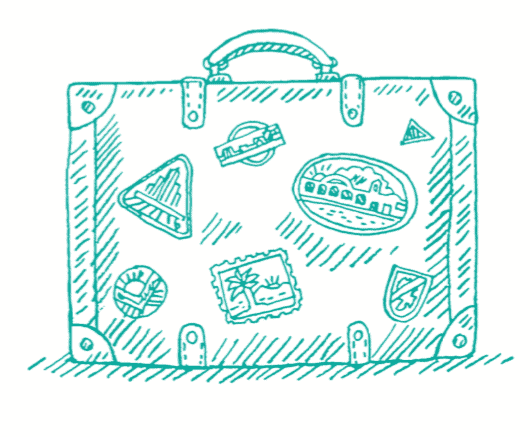 And while you could also download a Kindle version of the book, having the “real thing” in your hands is one of those additional tactile pleasures, like the umbrella in the drink. The heft of the book in your hands, the feel of the paper, the eye candy of the playful illustrations (by Alice Koswara) and ocean-hued aquamarine headline typeface. I hope my friend keeps a journal as she reads, noting how the activities and discoveries that glide through the pages are familiar from her own life experience. Or not.
And while you could also download a Kindle version of the book, having the “real thing” in your hands is one of those additional tactile pleasures, like the umbrella in the drink. The heft of the book in your hands, the feel of the paper, the eye candy of the playful illustrations (by Alice Koswara) and ocean-hued aquamarine headline typeface. I hope my friend keeps a journal as she reads, noting how the activities and discoveries that glide through the pages are familiar from her own life experience. Or not.
If you’re on a cruise, like my friend has planned, you’re already engaged in a new adventure, an odyssey to refresh the full spirit of awareness, of sensory exploration that I consider living “inside the flame.”
On holiday, we give ourselves permission to spend more time plunging deeper into the rich, sensory pleasures that fill each morning, afternoon, evening. Paying attention always seems heightened, sharper to me when I exit my home turf and sail out into new places, newly relaxed activities, and of course that best pleasure of all—having lots of unstructured time to myself.
That’s the best frame of mind in which to consider the various chapters of Inside the Flame. They can be read in any order—although there is an underlying movement toward a sense of closure at the end. On her vacation cruise my friend will hopefully discover her own favorite chapters, the ones that make her smile with recognition. And the ones that excite new possibilities in the life to which she returns, refreshed.
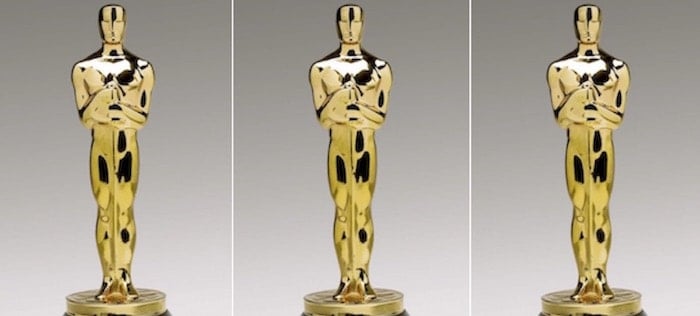
by Christina Waters | Feb 11, 2017 | Home |
Who’ve we got now? Hmm….
Best Actor. Two words. Casey Affleck.

I love Viggo, and I don’t love Denzel (no I haven’t seen Fences but I’ve endured the film’s trailer at least four times. Way too forced, too much of a strident over-the-top theater piece.). Gosling? Surely you jest. And I didn’t like Garfield in Silence. So that leaves…..yes! Casey Affleck a true existential hero who brings fresh authenticity and beauty to the idea of angst.
Best Actress: Should go to the stunning Isabelle Huppert, but the film Elle is such a difficult, often horrifying, always perplexing film to watch that I doubt the Academy will go for it. Nope to Emma Stone. Nope to Meryl Streep in a silly role. Ruth Negga? perhaps. But most likely Natalie Portman for embodying an American icon, Jackie. But if the Academy unloads its all-American needs on La La Land (in all the other categories), it will go to the brilliant Huppert.
Best Supporting Actor.

I would so love it if the remarkable Dev Patel took it for Lion. He just won the BAFTA, so it’s very very possible. But it might go, for many political and alternative reasons, to Mehershala Ali in Moonlight.
Best Supporting Actress.
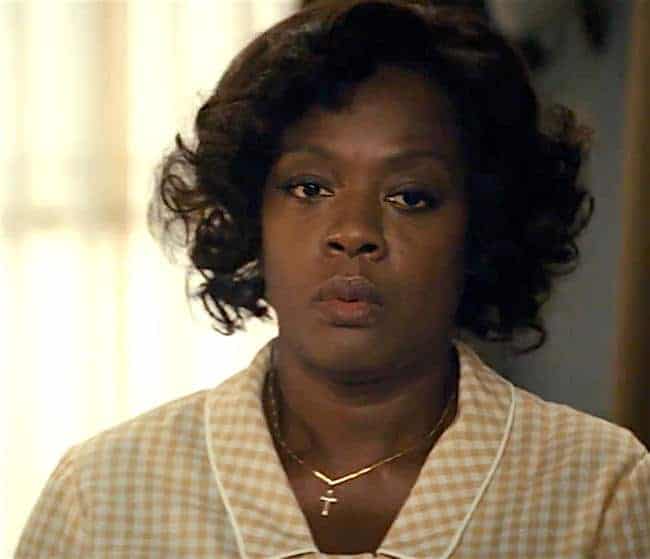
Viola Davis. But so help me Nicole Kidman has never been better than she was as the generous Australian mother in Lion. Even her Oscar-winning portrayal of Virginia Woolf in The Hours wasn’t this moving.
Best Director. Should be Kenneth Lonergan for his work in creating an indelible tragic master piece in Manchester by the Sea. He’s been overlooked for fine work in the past. This is a richly-deserved bit of film orchestration. But given the severe case of hype-ola and self-congratulations going on around La La Land, it will probably be Damien Chazelle.
Best Cinematography. Silence. This film is even more gorgeous and pungent than Scorsese’s Last Temptation of Christ. But I wouldn’t mind if Lion got it. Just not please please not La La Land.
Best Original Score. Lion would be great. Yes another big yes for this wonderful film. Dustin O’Halloran and Hauschka create undulatant musical aching in their sound track strong on augmented harp and prepared piano. Magical and rhapsodic. (But yes, I do know that La La Land is the odds-on favorite in this category too.)
Best Sound Editing: Arrival, thanks to the eerie intertwining of animal sounds, including birds and camels, slowed down, manipulated, and interspliced with samples of Maori native music and plastic. The results are sonic poetry, altogether other-worldly, yet somehow recognizable. I know I said this film would NOT win an Oscar, but in this case I kinda hope I’m wrong.
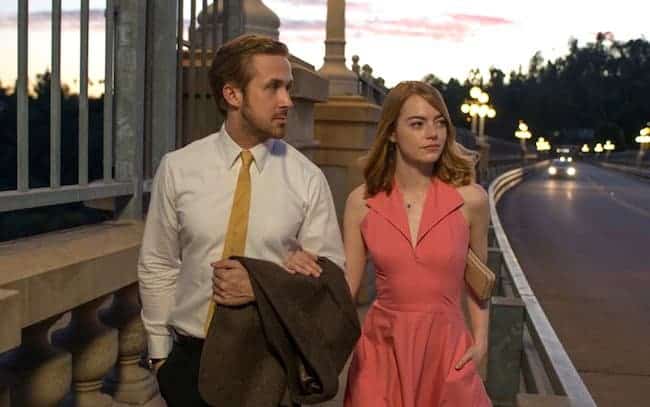
Best Production Design: Why fight it? That enormous tide of promotional spin that insists upon beating us over the head with how terrific it looks, how much clever stuff went into orchestrating each scene, etc. etc. it will just have to be…..La La Land.
Best Picture: In my dreams it would be Lion, even more perfectly realized in every way—sight, sound, writing, acting, scope—than even Man-by-the-Sea. But in the harsh glare of daylight, it will be La La Land.
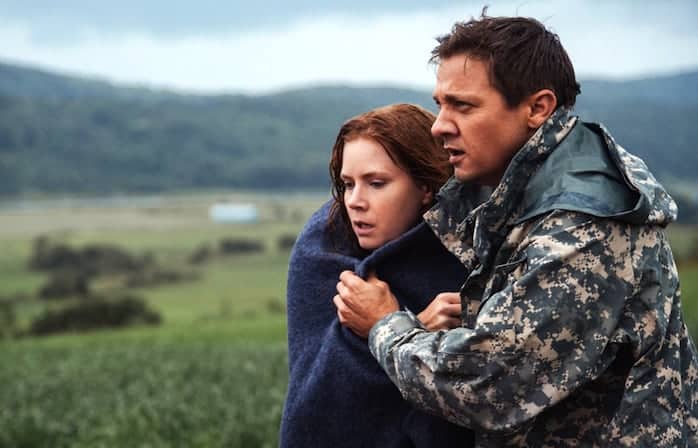
by Christina Waters | Feb 9, 2017 | Home |
This film will not get an Oscar. None. Especially not lead actor Amy Adams, who (wisely) was not nominated. Sound harsh? Be honest. When have you turned to your film-going companion and said, “hey, let’s go see that new Amy Adams flick.”? Never. The reason is that, despite the promotional ads taken out by her studio, producers, publicist, and/or mother, you don’t think about Amy Adams at all.
There’s a reason for this: she’s forgettable. Let me put that another way: she’s not memorable. To be a memorable actor you need either extravagant amounts of talent, or an intriguing, expressive face. Our greatest film stars have both, e.g. Meryl Streep, Jennifer Lawrence, Benedict Cumberbatch. Alas, Adams lacks physical excitement as well as acting energy. Certainly this is true in Arrival, the new film by Denis Villeneuve in which we are asked to believe that Adams is über linguist Dr. Louise Banks, contacted by the Army to help decode communications from a mysterious group of aliens that have come to earth.
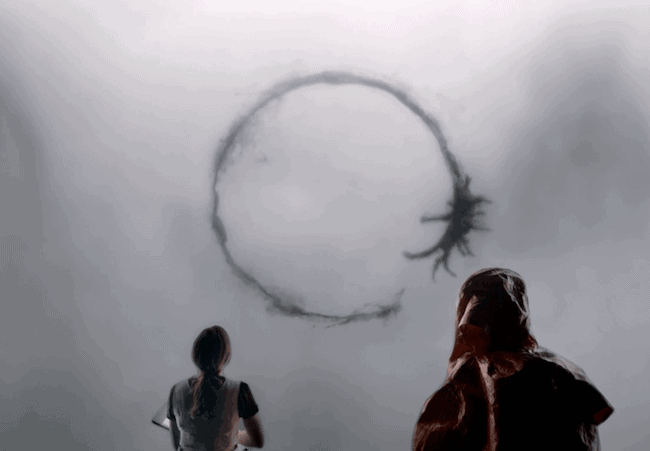 Dr. Banks brings her own emotional sufferings with her to the windswept plains of Montana where an enormous ovoid alien craft hovers, and opens its portal to receive inquiring scientists every 18 hours. The medium of moving pictures allows lavish ease of time-tinkering such that a film can show us flashbacks, flash-forwards, interspersed with imagined or perhaps remembered sounds, words, kisses, tears, and “events.” And Villeneuve uses such non-linear filmic devices in an attempt to inject intrigue into the character of Louise Banks, as well as to help cover-up what is otherwise a highly worn path of science fiction clichés.
Dr. Banks brings her own emotional sufferings with her to the windswept plains of Montana where an enormous ovoid alien craft hovers, and opens its portal to receive inquiring scientists every 18 hours. The medium of moving pictures allows lavish ease of time-tinkering such that a film can show us flashbacks, flash-forwards, interspersed with imagined or perhaps remembered sounds, words, kisses, tears, and “events.” And Villeneuve uses such non-linear filmic devices in an attempt to inject intrigue into the character of Louise Banks, as well as to help cover-up what is otherwise a highly worn path of science fiction clichés.
Borrowing freely from such film classics as Close Encounters, Apocalypse Now, The Day the Earth Stood Still, and E.T., this film was attractively bathed with music by Jóhann Jóhannsson and sound design by Montreal-based sound editor Sylvain Bellemare, whose team created uncanny sonic “language” for the amorphous aliens utilizing mixed and manipulated sounds of animals, metal, Maori flute, and water. Among others. But back to the main problem: casting.
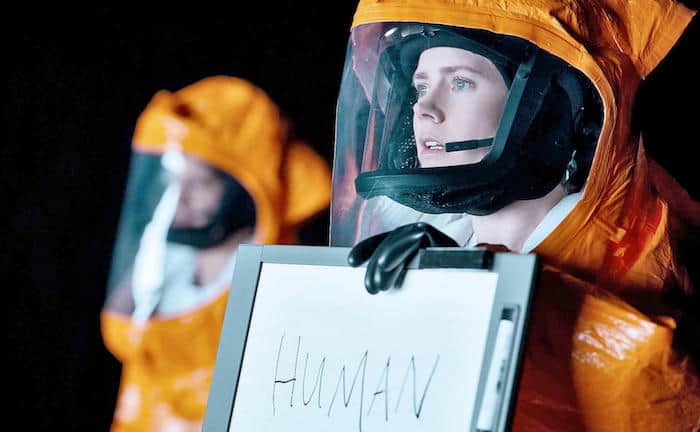 Some films soar into the stuff of indelible memories thanks to powerful performers and their mesmerizing screen presence. See my reviews of Lion, and Manchester by the Sea, for recent examples. By the exact same token, a film—even a film that has everything else going for it—can thud! because of weak performers in key roles. And in this case that’s Amy Adams, whose rounded features seem incapable of emotional import or expression, and the barely better Jeremy Renner as the bland linguist’s fellow researcher. In Retter’s case, his perfunctory performance was further sabotaged by a weak-kneed script and cliché-driven direction. [See Amy Adams’ face in the photo above? That’s the most “acting” she does in the entire film. This is her Meryl Streep moment.]
Some films soar into the stuff of indelible memories thanks to powerful performers and their mesmerizing screen presence. See my reviews of Lion, and Manchester by the Sea, for recent examples. By the exact same token, a film—even a film that has everything else going for it—can thud! because of weak performers in key roles. And in this case that’s Amy Adams, whose rounded features seem incapable of emotional import or expression, and the barely better Jeremy Renner as the bland linguist’s fellow researcher. In Retter’s case, his perfunctory performance was further sabotaged by a weak-kneed script and cliché-driven direction. [See Amy Adams’ face in the photo above? That’s the most “acting” she does in the entire film. This is her Meryl Streep moment.]
Lest you rise up indignantly and accuse me of body-shaming in the case of Adams, let me remind you that I, like so many others, paid good money to be swept away by the magic of cinema. I had high hopes for Arrival, a narrative about contact and communication with enigmatic extra-terrestrials. Producers spent a lot of money preparing a canvas upon which a handful of actors would deliver the story and create characters who were spellbound by what they found.
To create all of this you need performers capable of enormous intensity, especially when they are on-screen almost all the time, and their faces—rather than car crashes, explosions, and scenic vistas—are doing all of the work.
Adams Adams’ face can’t do the heavy-lifting required.
Simply the wrong choice upon which to hang a film. Helen Mirren, yes. Adams, no. So it’s not a mystery at all why her name does not turn up on the Best Actress list of nominees this year. No mystery at all.
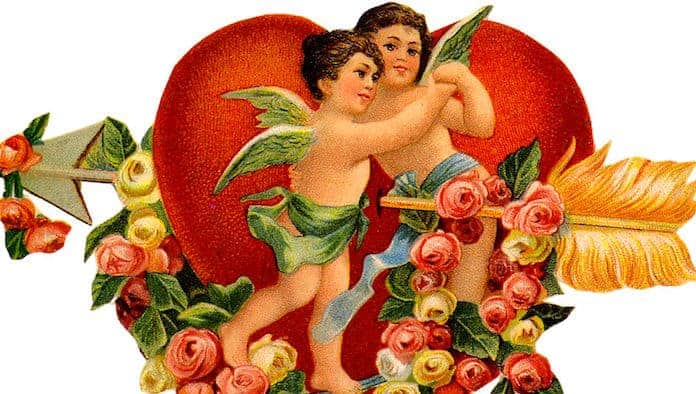
by Christina Waters | Feb 4, 2017 | Home |
Every February 14, millions of Americans slip into a trance of ritual passion. Under its influence, we shell out serious money for extravagant and expensive perishables. Hot house roses—at $75 a dozen—will be snapped up like glue guns at an Etsy open houe. Enough chocolate bonbons to put us all into insulin overload will fly out the confectionary doors. We will put on tight clothes and really uncomfortable shoes to consume $200 dinners. Is it an extra-terrestrial virus? No, it’s Valentine’s Day, the collective heart attack that infects the very fabric of society with what optimists see as harmless indulgence.
Realists identify this spending frenzy as a clear case of social guilt, with a libidinal twist. The flowers, candy, greeting cards with icky-sweet platitudes—we use these mercantile mea culpas to atone for our butt-brained insensitivity, our inability to express our feelings. It’s payback time, with Mrs. See’s macadamia brittle as currency. Roses aren’t merely fragrant foreplay, they’re often surrogates. Instead of making a direct plea for nookie, we “say it with flowers.†Here’s the one day a year that adolescent boys (and many grownup ones) believe they’ll get lucky if they can only find the right card.
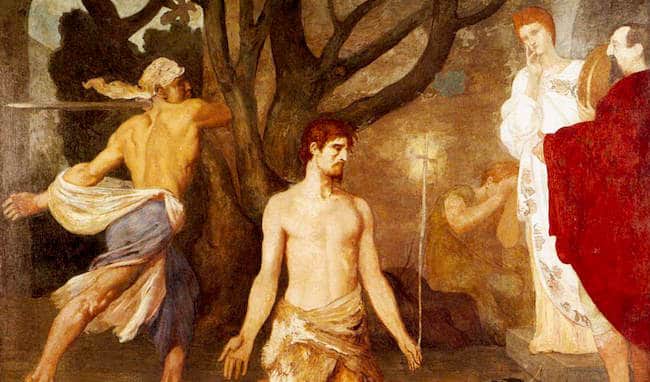
How did we get so locked into this insanity? Actually, the whole multi-billion dollar hoopla began with two ill-fated Romans—both named Valentine—who were simply in the wrong place at the wrong time, got executed and became Christian martyrs. The odyssey leading from two guys named Valentine to a modern kingdom called Hallmark has more twists than a French tickler. The two Valentines lived in 3rd century Rome as out-of-the-closet Christians. Sharing not only a name, but the same death date as well—February 14—their cult was grafted onto the very popular Lupercalia festivities held every February 15. During the pagan celebration, scantily-clad young men called Luperci would run around town, sacrificing goats, and playfully whipping women with goatskin thongs. Romans thought this behavior would increase fertility, and I have no doubt that it did.
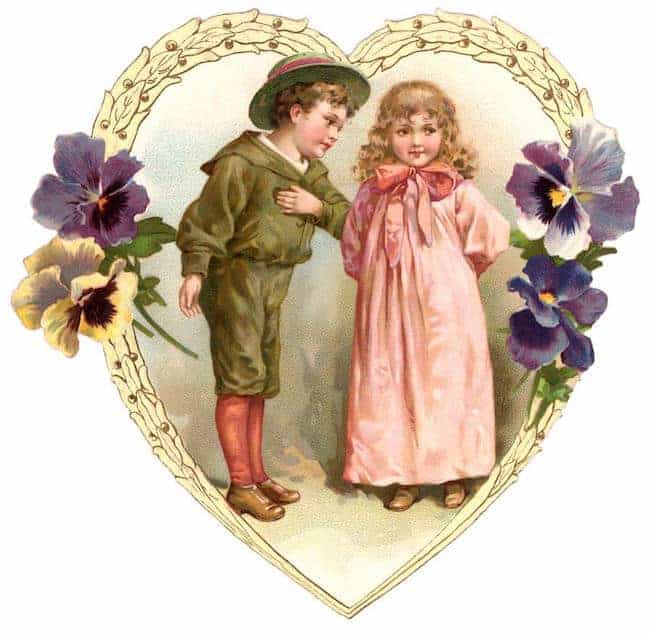 A millennium later, having absorbed Lupercalia in the great tradition of Catholic imperialism, St. Valentine’s Day was given new sex appeal by none other than that gabby Anglo scribe, Geoffrey Chaucer, who created the very first Hallmark moment when he called Valentine’s Day a romantic “time when every fowl comes to chose his mate.†Lusty after all that Black Plague, and heady with literacy, European chivalric types began penning love poetry, which soon led to the first officially documented Valentine message, sent in 1415 by Charles, Duke of Orleans, to his wife, while he was detained in the Tower of London.
A millennium later, having absorbed Lupercalia in the great tradition of Catholic imperialism, St. Valentine’s Day was given new sex appeal by none other than that gabby Anglo scribe, Geoffrey Chaucer, who created the very first Hallmark moment when he called Valentine’s Day a romantic “time when every fowl comes to chose his mate.†Lusty after all that Black Plague, and heady with literacy, European chivalric types began penning love poetry, which soon led to the first officially documented Valentine message, sent in 1415 by Charles, Duke of Orleans, to his wife, while he was detained in the Tower of London.
Over the 16th and 17th centuries, European country folk engaged in all manner of quaint courtship rites involving herbs, rocks and secret messages on Valentine’s Day, a festival that gave them permission to express naughty intentions. And with the emergence of reliable postal services in the mid-1800s, V-Day was re-invented as an orgy of sentimental consumerism. Americans, as well as the English and the French, went mad for the new craze of sending sweet nothings through the mail. Books filled with sample Valentine’s love letters became bestsellers, and pretty soon the confectioners and florists got into the act, urging lovers to commit ever more costly acts of amorous disclosure. And they did.
 In 1923 the National Confectioners’ Association took up the slogan, “Make Candy Your Valentine†echoing the avalanche of promotional hoopla that had turned Valentine’s Day into a mercantile cash cow during the Civil War era. It was a traveling salesman from Kansas City, however, who took the business of Valentine’s Day over the top when he founded his greeting card business in 1910. A workaholic with a gift for verbal reductionism, Joyce C. Hall firmly believed that modern Americans had little time to take pen in hand and compose original holiday sentiments. So he did it for them. Today the Hallmark empire he founded rakes in $6 billion each year.
In 1923 the National Confectioners’ Association took up the slogan, “Make Candy Your Valentine†echoing the avalanche of promotional hoopla that had turned Valentine’s Day into a mercantile cash cow during the Civil War era. It was a traveling salesman from Kansas City, however, who took the business of Valentine’s Day over the top when he founded his greeting card business in 1910. A workaholic with a gift for verbal reductionism, Joyce C. Hall firmly believed that modern Americans had little time to take pen in hand and compose original holiday sentiments. So he did it for them. Today the Hallmark empire he founded rakes in $6 billion each year.
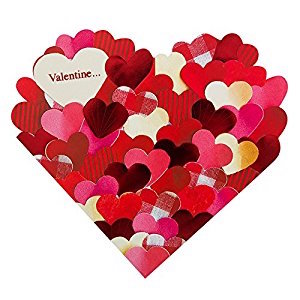 How many of those special cards or bouquets of roses lead to true romance? How many chocolate truffles yield a roll in the hay? Who knows, but we’re all hopelessly hooked. How hooked? Over one billion Valentine’s cards will be sent next week. Candy sales will exceed $900 million and over 100 million roses will be purchased as preludes to romance, or at least the safest sex surrogate that money can buy.
How many of those special cards or bouquets of roses lead to true romance? How many chocolate truffles yield a roll in the hay? Who knows, but we’re all hopelessly hooked. How hooked? Over one billion Valentine’s cards will be sent next week. Candy sales will exceed $900 million and over 100 million roses will be purchased as preludes to romance, or at least the safest sex surrogate that money can buy.

 And while you could also download a Kindle version of the book, having the “real thing” in your hands is one of those additional tactile pleasures, like the umbrella in the drink. The heft of the book in your hands, the feel of the paper, the eye candy of the playful illustrations (by Alice Koswara) and ocean-hued aquamarine headline typeface. I hope my friend keeps a journal as she reads, noting how the activities and discoveries that glide through the pages are familiar from her own life experience. Or not.
And while you could also download a Kindle version of the book, having the “real thing” in your hands is one of those additional tactile pleasures, like the umbrella in the drink. The heft of the book in your hands, the feel of the paper, the eye candy of the playful illustrations (by Alice Koswara) and ocean-hued aquamarine headline typeface. I hope my friend keeps a journal as she reads, noting how the activities and discoveries that glide through the pages are familiar from her own life experience. Or not.






 Dr. Banks brings her own emotional sufferings with her to the windswept plains of Montana where an enormous ovoid alien craft hovers, and opens its portal to receive inquiring scientists every 18 hours. The medium of moving pictures allows lavish ease of time-tinkering such that a film can show us flashbacks, flash-forwards, interspersed with imagined or perhaps remembered sounds, words, kisses, tears, and “events.” And Villeneuve uses such non-linear filmic devices in an attempt to inject intrigue into the character of Louise Banks, as well as to help cover-up what is otherwise a highly worn path of science fiction clichés.
Dr. Banks brings her own emotional sufferings with her to the windswept plains of Montana where an enormous ovoid alien craft hovers, and opens its portal to receive inquiring scientists every 18 hours. The medium of moving pictures allows lavish ease of time-tinkering such that a film can show us flashbacks, flash-forwards, interspersed with imagined or perhaps remembered sounds, words, kisses, tears, and “events.” And Villeneuve uses such non-linear filmic devices in an attempt to inject intrigue into the character of Louise Banks, as well as to help cover-up what is otherwise a highly worn path of science fiction clichés. Some films soar into the stuff of indelible memories thanks to powerful performers and their mesmerizing screen presence. See my reviews of
Some films soar into the stuff of indelible memories thanks to powerful performers and their mesmerizing screen presence. See my reviews of 

 A millennium later, having absorbed Lupercalia in the great tradition of Catholic imperialism, St. Valentine’s Day was given new sex appeal by none other than that gabby Anglo scribe, Geoffrey Chaucer, who created the very first Hallmark moment when he called Valentine’s Day a romantic “time when every fowl comes to chose his mate.†Lusty after all that Black Plague, and heady with literacy, European chivalric types began penning love poetry, which soon led to the first officially documented Valentine message, sent in 1415 by Charles, Duke of Orleans, to his wife, while he was detained in the Tower of London.
A millennium later, having absorbed Lupercalia in the great tradition of Catholic imperialism, St. Valentine’s Day was given new sex appeal by none other than that gabby Anglo scribe, Geoffrey Chaucer, who created the very first Hallmark moment when he called Valentine’s Day a romantic “time when every fowl comes to chose his mate.†Lusty after all that Black Plague, and heady with literacy, European chivalric types began penning love poetry, which soon led to the first officially documented Valentine message, sent in 1415 by Charles, Duke of Orleans, to his wife, while he was detained in the Tower of London. In 1923 the National Confectioners’ Association took up the slogan, “Make Candy Your Valentine†echoing the avalanche of promotional hoopla that had turned Valentine’s Day into a mercantile cash cow during the Civil War era. It was a traveling salesman from Kansas City, however, who took the business of Valentine’s Day over the top when he founded his greeting card business in 1910. A workaholic with a gift for verbal reductionism, Joyce C. Hall firmly believed that modern Americans had little time to take pen in hand and compose original holiday sentiments. So he did it for them. Today the Hallmark empire he founded rakes in $6 billion each year.
In 1923 the National Confectioners’ Association took up the slogan, “Make Candy Your Valentine†echoing the avalanche of promotional hoopla that had turned Valentine’s Day into a mercantile cash cow during the Civil War era. It was a traveling salesman from Kansas City, however, who took the business of Valentine’s Day over the top when he founded his greeting card business in 1910. A workaholic with a gift for verbal reductionism, Joyce C. Hall firmly believed that modern Americans had little time to take pen in hand and compose original holiday sentiments. So he did it for them. Today the Hallmark empire he founded rakes in $6 billion each year. How many of those special cards or bouquets of roses lead to true romance? How many chocolate truffles yield a roll in the hay? Who knows, but we’re all hopelessly hooked. How hooked? Over one billion Valentine’s cards will be sent next week. Candy sales will exceed $900 million and over 100 million roses will be purchased as preludes to romance, or at least the safest sex surrogate that money can buy.
How many of those special cards or bouquets of roses lead to true romance? How many chocolate truffles yield a roll in the hay? Who knows, but we’re all hopelessly hooked. How hooked? Over one billion Valentine’s cards will be sent next week. Candy sales will exceed $900 million and over 100 million roses will be purchased as preludes to romance, or at least the safest sex surrogate that money can buy.